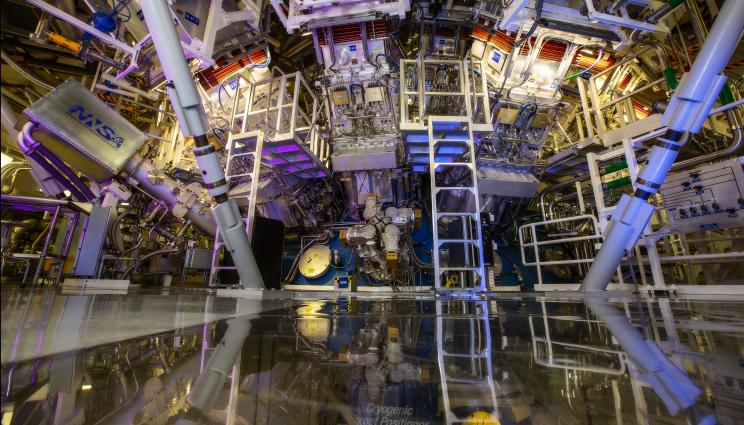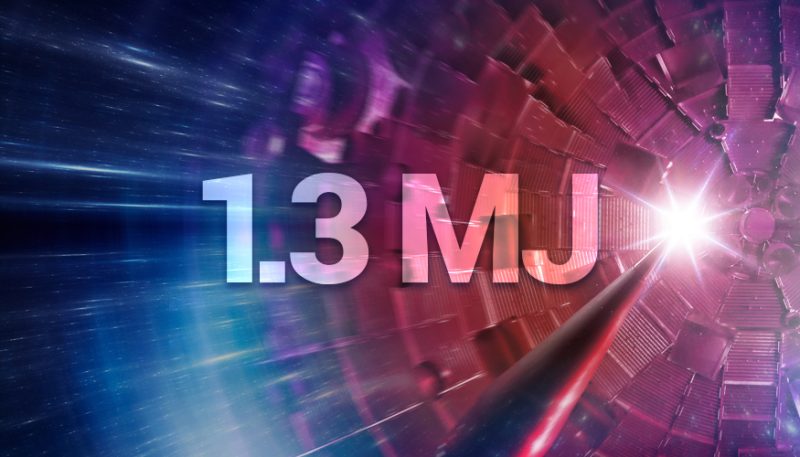
The ability to harness fusion – the energy source of our sun and all stars – would be a game-changer for earthly power generation. Scientists have been seeking this holy grail of energy research for a century. On August 8, 2021, researchers at the Lawrence Livermore National Laboratory (LLNL) in California said they’ve made breakthroughs that place them at the threshold of fusion ignition. Their experiment focused laser light from LLNL’s National Ignition Facility – the size of three football fields – onto a target the size of a BB. The experiment produced a hotspot the diameter of a human hair. It generated more than 10 quadrillion watts of fusion power for 100 trillionths of a second.
That amount of power generation might sound small. But remember that the Wright brothers’ first flight lasted 12 seconds. And today we can fly miles above the ground for hours and hours at a time.
What’s more, the fusion research community uses many technical definitions for ignition. But a spokesperson for LLNL told EarthSky that a 1997 defintion – adopted by the National Academy of Sciences – calls for a:
… fusion yield greater than laser energy delivered. This experiment [announced August 8] produced fusion yield of roughly 2/3 of the laser energy that was delivered, which does not meet the definition of ignition …
So they’re not to ignition yet, by this definition. But the LLNL scientists said they’ve accomplished an 8-fold improvement over experiments from earlier this year. And, they said, it’s a 25-fold increase over their previous record from 2018. The scientists now feel they’re on track toward something greater. They said their recent work paves the way to fusion reactions that will ultimately produce more energy than that needed to operate the laser.
And that will be very exciting!
The science of fusion
Nuclear fusion powers our sun. It’s what causes the sun to shine. Fusion is the joining of two lighter elements into a heavier element. Inside our sun, two hydrogen atoms (the simplest element) fuse to create helium. The fusion inside stars follows Einstein’s famous equation E=mc^2. That is, when the atoms of hydrogen fuse to make helium, a bit of mass is left over. That mass converts to energy … and causes the sun to shine.
Current nuclear reactors operate via a related process, called fission. That’s the splitting of atoms to produce energy. Fusion is a long-sought goal because it creates three to four times more energy than fission. And it does so without the toxic by-product of nuclear waste (although a new fission technique, called Generation IV, is said to be able to take care of the waste problem).
Scientists accomplished fission on Earth in the 1940s. The bombs dropped on Hiroshima and Nagasaki were powered by nuclear fission. But fusion has been a more elusive goal. Enormous amounts of energy are required to produce a fusion reaction in Earth-based laboratories. So far, the energy output has never been more than the input of energy required.
How fusion is created in a lab
At the LLNL’s National Ignition Facility, scientists use a giant array of 200 laser beams the length of three football fields focused on a target smaller than a pea. These targets are fuel pellets of heavy hydrogen, namely deuterium and tritium. The lasers create a great amount of heat and pressure, like that found at the sun’s core. The heat and pressure creates alpha particles – the same thing as a helium nucleus – that heat the surrounding plasma. The heated plasma releases more alpha particles until the reaction sustains itself. Scientists call this process ignition.
The August 8 experiment broke what scientists call the 1 megajoule barrier. That’s why some institutions – for example, Imperial College London – reported that ignition had been accomplished. As Hayley Dunning of Imperial College London said:
… there are a few definitions of ignition! Our researchers took it as the threshold of creating more than one megajoule of power whereas I think Livermore are looking more at ‘break even,’ where the energy in equals the energy out. The first has been realized but not yet the second. But it’s only a matter of time now.
Nuclear fusion ignition, clean energy and the universe
One of the exciting ramifications of triggering ignition of fusion in a lab is what it means for the future of energy production. As Arthur Turrell of Imperial College London said:
This phenomenal breakthrough brings us tantalizingly close to a demonstration of ‘net energy gain’ from fusion reactions, just when the planet needs it.
Jeremy Chittenden of Imperial College London noted both the energy implications as well as our understanding of the creation of the universe:
The pace of improvement in energy output has been rapid, suggesting we may soon reach more energy milestones, such as exceeding the energy input from the lasers used to kick-start the process. This is crucial for opening up the promise of fusion energy and allowing physicists to probe the conditions in some of the most extreme states in the Universe, including those just minutes after the Big Bang.

Aidan Crilly of Imperial College London added:
Reproducing the conditions at the center of the sun will allow us to study states of matter we’ve never been able to create in the lab before, including those found in stars and supernovae. We could also gain insights into quantum states of matter and even conditions closer and closer to the beginning of the Big Bang. The hotter we get, the closer we get to the very first state of the universe.
Fusion in nuclear weapons
The United States has a Stockpile Stewardship Program to ensure the country’s nuclear capabilities don’t erode as the weapons age, and the fusion insight is an important part of this effort. Lawrence Livermore National Laboratory Director Kim Budil said:
This result is a historic step forward for inertial confinement fusion research, opening a fundamentally new regime for exploration and the advancement of our critical national security missions.
Science and technology improvements that helped achieve the goal of ignition included new diagnostics, target fabrication improvements, improved laser precision, and design changes to increase the energy coupled to the implosion and the compression of the implosion.
The future of fusion
It’s still too early to know exactly what the future holds, but with continued improvements on creating fusion in the lab, our energy and scientific advances will be monumental. Steven Rose of Imperial College London said:
What has been achieved has completely altered the fusion landscape, and we can now look forward to using ignited plasmas for both scientific discovery and energy production.
Simply demonstrating nuclear fusion ignition is possible in a lab allows others to take the ball and run toward our clean energy future. Chittenden said:
We have now proven it is possible to reach ignition, giving inspiration to other laboratories and start-ups around the world working on fusion energy production to try to realize the same conditions using a simpler, more robust and above all cheaper method.
Both the Imperial College London and Lawrence Livermore National Laboratory made separate announcements describing the fusion milestone. The Imperial College London announcement focused solely on the scientific side, reporting that the discovery could lead to a clean energy source and answer questions about what happened in the minutes after the Big Bang. The announcement from Lawrence Livermore National Laboratory centered on national security and modernizing nuclear weapons.

Bottom line: Nuclear fusion ignition was triggered in a lab for the first time. It could lead the way to clean energy and insights into the Big Bang.











